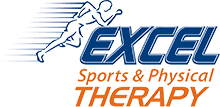To most people, the joints on each side of the jaw are simply the jaw joints. However, to physical therapists and other medical professionals, these joints are the temporomandibular joints (TMJs). People who are dealing with pain and other symptoms in their TMJ often seek help from physical therapists. There are several therapy techniques that can help with TMJ issues; trigger point therapy is commonly used in TMJ physical therapy because it’s very effective.
What is a trigger point?
TMJ physical therapy often has to deal with muscle problems that can be the root of jaw joint issues. One example of such a problem is a trigger point in the jaw or neck muscles. When an area of tension builds up in the muscle, it’s called a trigger point. This area can be harder than the tissue around it, and it’s often tender to the touch. The tension built up in trigger points can make it harder for the jaw muscles to move normally, and this can pull the joint out of alignment or cause other problems that lead to TMJ pain.
What causes trigger points?
Trigger points can be caused by several factors, and many of them can be addressed with TMJ physical therapy. For one thing, mental stress can cause you to clench your jaw muscles. This clenching is often done without conscious thought, but over time, it can cause trigger points to develop. Bacterial infections and other illnesses can also lead to these areas of tension. Also, injuries to the jaw or neck muscles can cause a trigger point to form.
How does trigger point therapy work?
The goal of trigger point therapy is to relieve the tension stored up in a trigger point, and this is the reason it’s often used in TMJ physical therapy. Trigger points could be causing a muscle to stiffen and pull on the affected TMJ, which can cause pain and other symptoms.
Trigger point therapy involves hands-on movements designed to break up a tense area of muscle. For example, the therapist will place pressure on the trigger point, and they will then perform massage-like hand movements to release the pent-up tension in the trigger point. By releasing this tension, the therapist can help restore normal muscle movement, and this can also help realign the TMJ. In turn, the reduced tension and realignment can help decrease the pain and other symptoms you’ve been dealing with.
Excel Sports & Physical Therapy offers high-quality TMJ physical therapy
If you’re searching for TMJ physical therapy, Excel Sports & Physical Therapy can help. We offer free screening that can help you learn the root cause of your pain, and our team can also build you a personalized treatment plan for your TMJ issues. Trigger point therapy is one therapy method that can be included in this plan, but it may also use other techniques such as:
Take the next step to get our help with your pain. Contact our team today for more information or to schedule an initial appointment.






